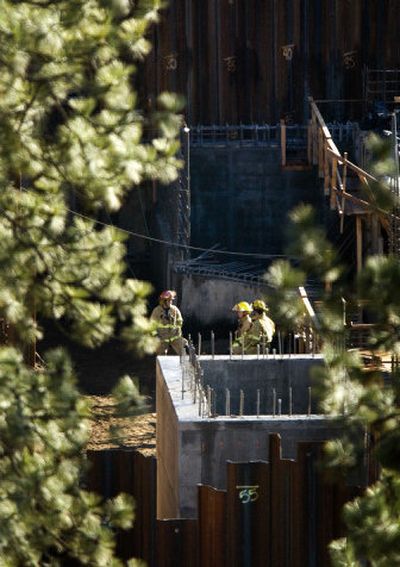Beam kills construction worker

A construction worker crushed by a falling beam Tuesday at Spokane’s wastewater treatment plant was helping rebuild equipment that killed a city worker about 2 ½ years ago.
The 26-year-old North Idaho resident, Tizoc Gayton, was removing shoring about 9 a.m. Tuesday that had been erected during excavation for two new waste digesters being installed at the plant, said Marlene Feist, a spokeswoman for the city of Spokane. He was employed by Garco Construction Inc.
“Clearly, what happened in the past makes this more difficult,” Feist said.
The work is part of a $136 million upgrade at the plant, which is along the Spokane River adjacent to Riverside State Park. Spokane-based Garco won a portion of the work, worth about $34 million, involving building two new egg-shaped digesters to replace one that collapsed in May 2004, killing longtime sewer maintenance worker Mike Cmos.
“Nothing like this has ever happened before,” said Tim Welsh, president of Garco Construction. The construction company has worked on numerous projects throughout the area including the Spokane Arena, Gonzaga’s McCarthey Athletic Center, several Spokane-area high schools and the Spokane Valley Mall.
Gayton started working at Garco in October. He previously worked with another construction company for several years and had been certified as a journeyman pile driver, Welsh said.
Tuesday morning, Gayton was removing sheet piling, which was described as a temporary retaining wall. “It appears the beam he was working on came loose and fell on him,” Welsh said. “He was cutting it loose with a torch.”
Work on the construction project has been delayed indefinitely, Feist said. The accident is under investigation by the Washington Department of Labor and Industries and the Spokane Police Department.
The digester project began in April.
City officials have been concerned that the plant’s two digesters were losing capacity since they had not been cleaned of excess sludge buildup since the 2004 accident.
In 2004, malfunctions at the plant on Aubrey L. White Parkway caused one of the sludge digesters to overfill, leading to a tank collapse and the death of Cmos, who had gone onto the tank’s roof to stop the sludge from spilling into the river.
Two taller, steel-tank digesters shaped like eggs are being built by Garco.
The construction company posted a surety bond of up to $10 million in conjunction with the contract as well as a retainage bond of $1.7 million for potential cost overruns.
Garco reported revenue of $439 million in fiscal year 2005 as part of its bid on the digester contract.
The city originally placed a 425-day deadline on the project with penalties of $10,000 a day for failure to meet the deadline.
In September, Garco asked the city if the construction company could be allowed to work extra hours to make sure they were meeting the timeline, according to city documents. The city granted Garco an extra 1 ½ hours per day.
The construction company stopped working the extra hours in late summer, Welsh said, adding that “last week all employees worked normal 40-hour weeks.”
Garco has about 35 percent of the project done, Welsh said.
Along with the digesters, the city is having new sewage “clarifiers” with advanced filtration installed to meet federal and state Clean Water Act requirements. The goal is to remove about 90 percent of phosphorus currently being released into the river, and to reduce the concentration to less than 75 parts per billion.